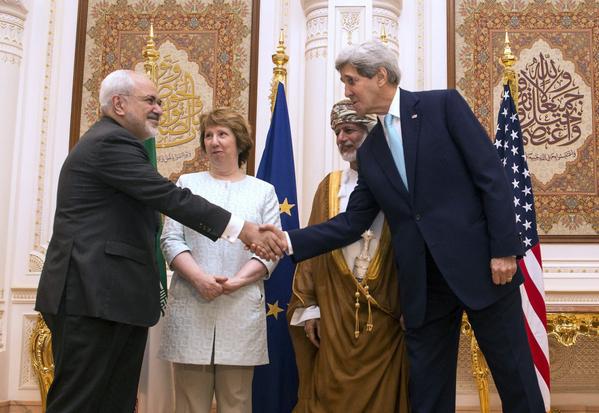The Iran Deal Benefits U.S. National Security
An Open Letter from Retired Generals and Admirals
On July 14, 2015, after two years of intense international negotiations, an agreement was announced by the United States, the United Kingdom, France, Germany, China and Russia to contain Iran’s nuclear program.
We, the undersigned retired military officers, support the agreement as the most effective means currently available to prevent Iran from obtaining nuclear weapons. The international deal blocks the potential pathways to a nuclear bomb, provides for intrusive verification, and strengthens American national security.
America and our allies, in the Middle East and around the world, will be safer when this agreement is fully implemented. It is not based on trust; the deal requires verification and tough sanctions for failure to comply. There is no better option to prevent an Iranian nuclear weapon.
Military action would be less effective than the deal, assuming it is fully implemented. If the Iranians cheat, our advanced technology, intelligence and the inspections will reveal it, and U.S. military options remain on the table. And if the deal is rejected by America, the Iranians could have a nuclear weapon within a year.
The choice is that stark. We agree with the Chairman of the Joint Chiefs of Staff, General Martin Dempsey, who said on July 29, 2015, “Relieving the risk of a nuclear conflict with Iran diplomatically is superior than trying to do that militarily.”
If at some point it becomes necessary to consider military action against Iran, gathering sufficient international support for such an effort would only be possible if we have first given the diplomatic path a chance. We must exhaust diplomatic options before moving to military ones.
For these reasons, for the security of our Nation, we call upon Congress and the American people to support this agreement.
GEN James “Hoss” Cartwright, U.S. Marine Corps; GEN Joseph P. Hoar, U.S. Marine Corps; GEN Merrill “Tony” McPeak, U.S. Air Force; GEN Lloyd W. “Fig” Newton, U.S. Air Force; LGEN Robert G. Gard, Jr., U.S. Army; LGEN Arlen D. Jameson, U.S. Air Force; LGEN Frank Kearney, U.S. Army; LGEN Claudia J. Kennedy, U.S. Army; LGEN Donald L. Kerrick, U.S. Army; LGEN Charles P. Otstott, U.S. Army; LGEN Norman R. Seip, U.S. Air Force; LGEN James M. Thompson, U.S. Army; VADM Kevin P. Green, U.S. Navy; VADM Lee F. Gunn, U.S. Navy; MGEN George Buskirk, US Army; MGEN Paul D. Eaton, U.S. Army; MGEN Marcelite J. Harris, U.S. Air Force; MGEN Frederick H. Lawson, U.S. Army; MGEN William L. Nash, U.S. Army; MGEN Tony Taguba, U.S. Army; RADM John Hutson, U.S. Navy; RADM Malcolm MacKinnon III, U.S. Navy; RADM Edward “Sonny” Masso, U.S. Navy; RADM Joseph Sestak, U.S. Navy; RADM Garland “Gar” P. Wright, U.S. Navy; BGEN John Adams, U.S. Air Force; BGEN Stephen A. Cheney, U.S. Marine Corps; BGEN Patricia “Pat” Foote, U.S. Army; BGEN Lawrence E. Gillespie, U.S. Army; BGEN John Johns, U.S. Army; BGEN David McGinnis, U.S. Army; BGEN Stephen Xenakis, U.S. Army; RDML James Arden “Jamie” Barnett, Jr., U.S. Navy; RDML Jay A. DeLoach, U.S. Navy; RDML Harold L. Robinson, U.S. Navy; RDML Alan Steinman, U.S. Coast Guard.










